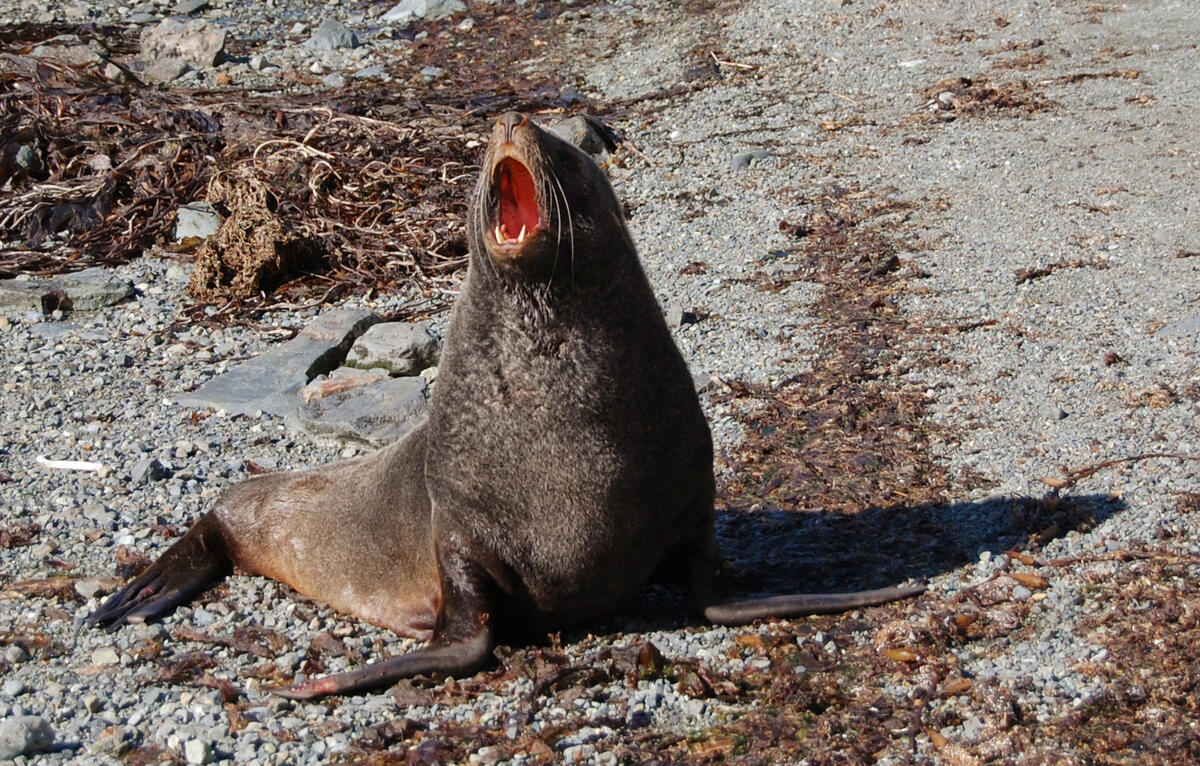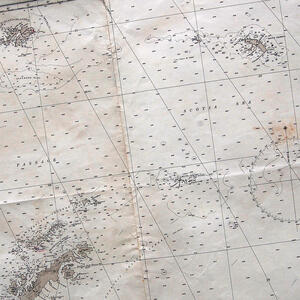
Grytviken historically is closely affiliated with Earnest Shackleton, the famous British explorer, and the doomed voyage of the Endurance. The Imperial Trans-Antarctic Expedition of 1914, which was to be a crossing of the continent via the South Pole, met with immediate disaster before its expedition members were even disembarked. Having sailed from Grytviken, the Endurance became trapped in pack ice in the Weddell Sea (east of the Antarctic Peninsula), to be slowly crushed and eventually sunk months later, leaving its crew stranded on the ice. The twenty-eight men including Shackleton along with three of the ship’s lifeboats made the long and dangerous route across and through the ice, now melting, to Elephant Island, eastern most of the South Shetlands. From here one of the lifeboats was adapted for the 700 NM last-ditch escape attempt back to South Georgia. The success of this ultimate nautical test led to the subsequent rescue of the crew remaining on Elephant Island – Shackleton’s achievement in the end was the avoidance of even a single death amongst his men.
Shackleton and Ocean Harbour
The whalers’ cemetery at Grytviken contains some sixty graves, including Shackleton’s. The place is well maintained and tended, and frequently receives visitors.
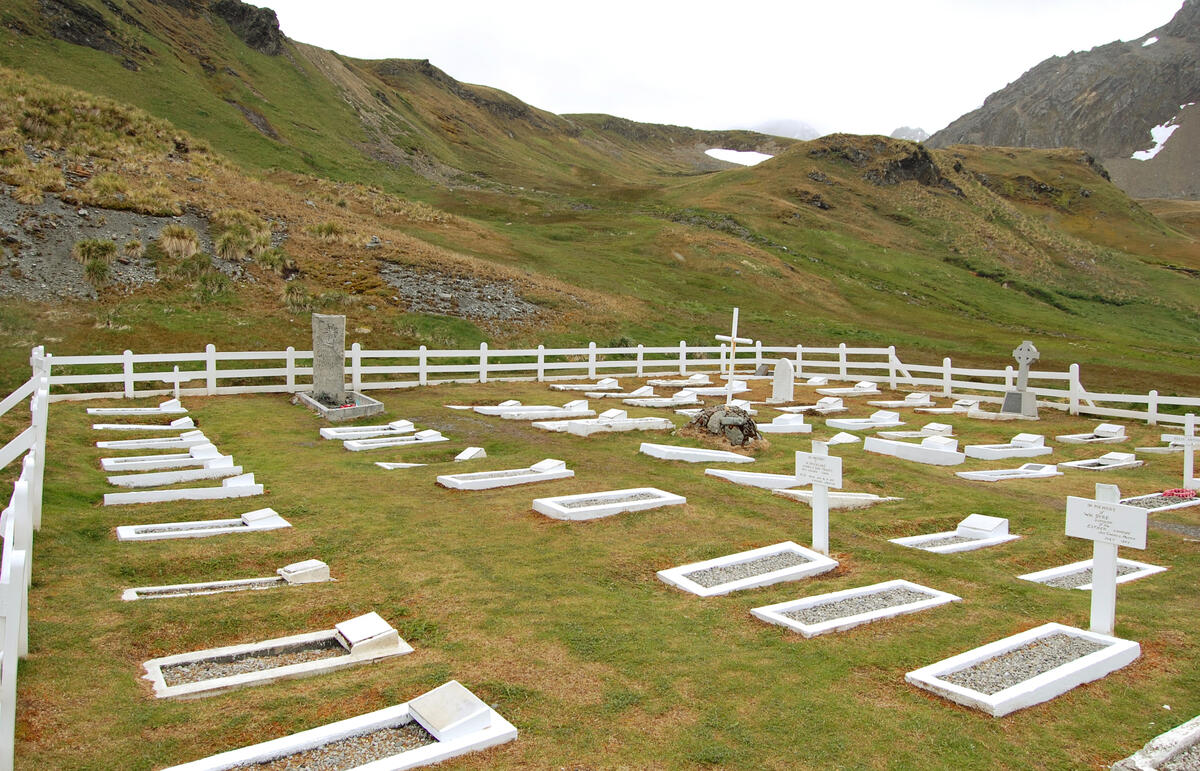
James Caird, one of the financiers of Shackleton’s expedition, lent his name to the reworked lifeboat salvaged from the sunken Endurance. This photo, from April 24th 1916, shows Shackleton and his select crew launching the boat from Elephant Island. North-east, more than 700 NM (1,300 km) of the Southern Ocean separated the shipwrecked men from hope of rescue.
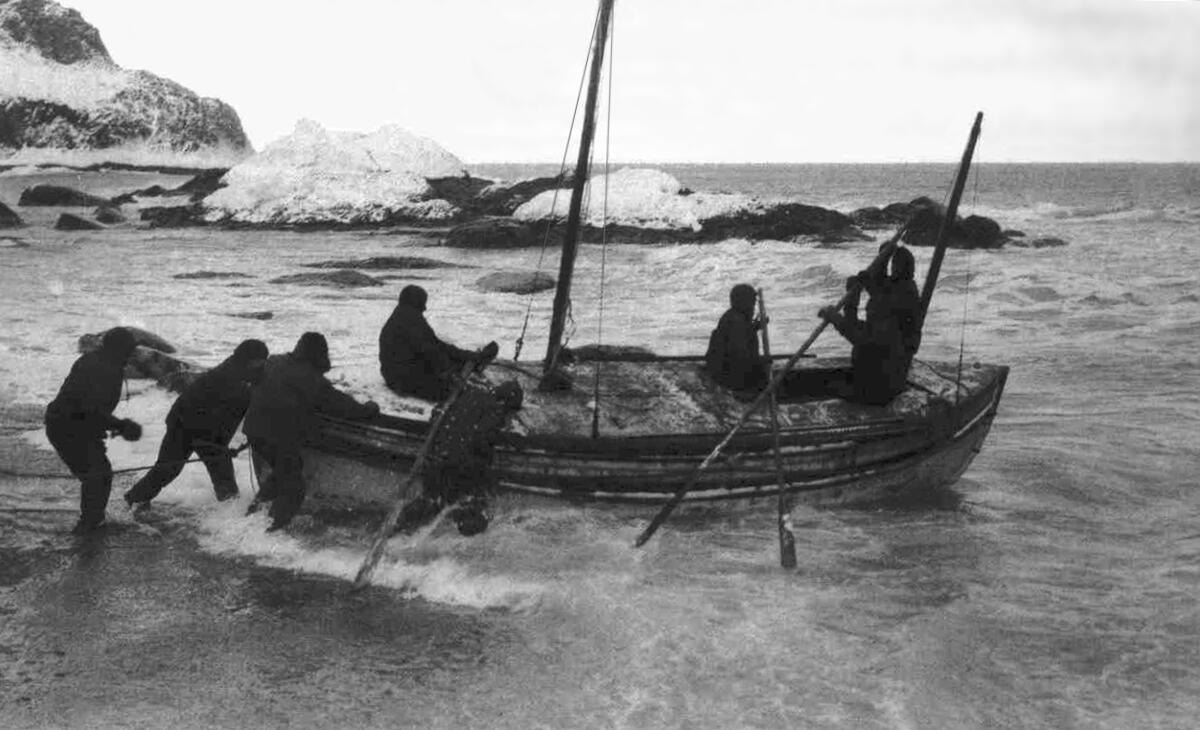
A feat of navigation in an age before electronic aids, the Caird made the voyage in seventeen days despite terrible weather and several storms that nearly wrecked the boat. Shackleton and crew clawed their way ashore on the south coast of South Georgia, the luxury of sailing around to the settlements on the north well beyond them. A further feat of trekking across the mountain range of the island’s interior was the final obstacle to be finally overcome, two and a half years after the Endurance set sail.
A replica of the Caird is found in the gallery adjacent the museum in Grytviken, constructed for the IMAX film Shackleton’s Antarctic Adventure.
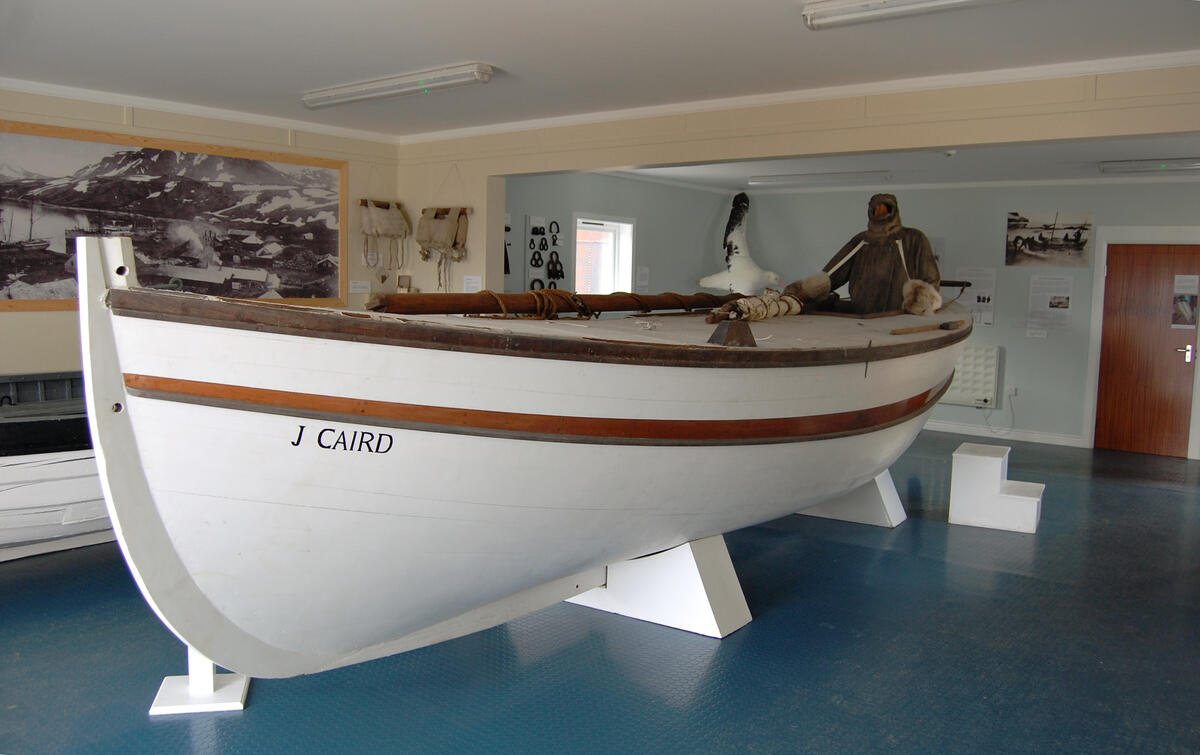
In 1917 Shackleton returned to England in the midst of World War I, and after various adventures found himself drawn again to the Antarctic. In 1921 he headed back to South Georgia on the Quest, a newly bought ship commissioned for his Shackleton-Rowett Expedition which had the objective of circumnavigating the continent and seeking out undiscovered islands.
A day after arriving at Grytviken in January 1922, Shackleton suffered a fatal heart attack. His body was sent to England via Uruguay, but immediately returned from Montevideo to South Georgia on receipt of instructions from Shackleton’s wife who requested he be buried on the island.
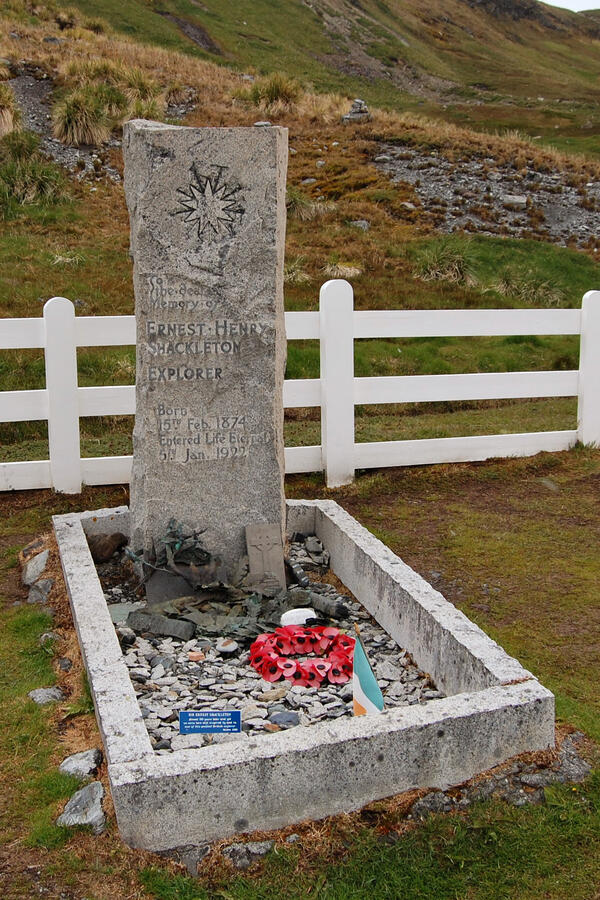
With this somber piece of history told, our own modern day adventure could continue. Kiwi Roa left King Edward Cove with crew rested and boom fixed, with a view to seeing more of this awe-inspiring land.
The Nordenskjöld Glacier lies at the head of Cumberland East Bay.
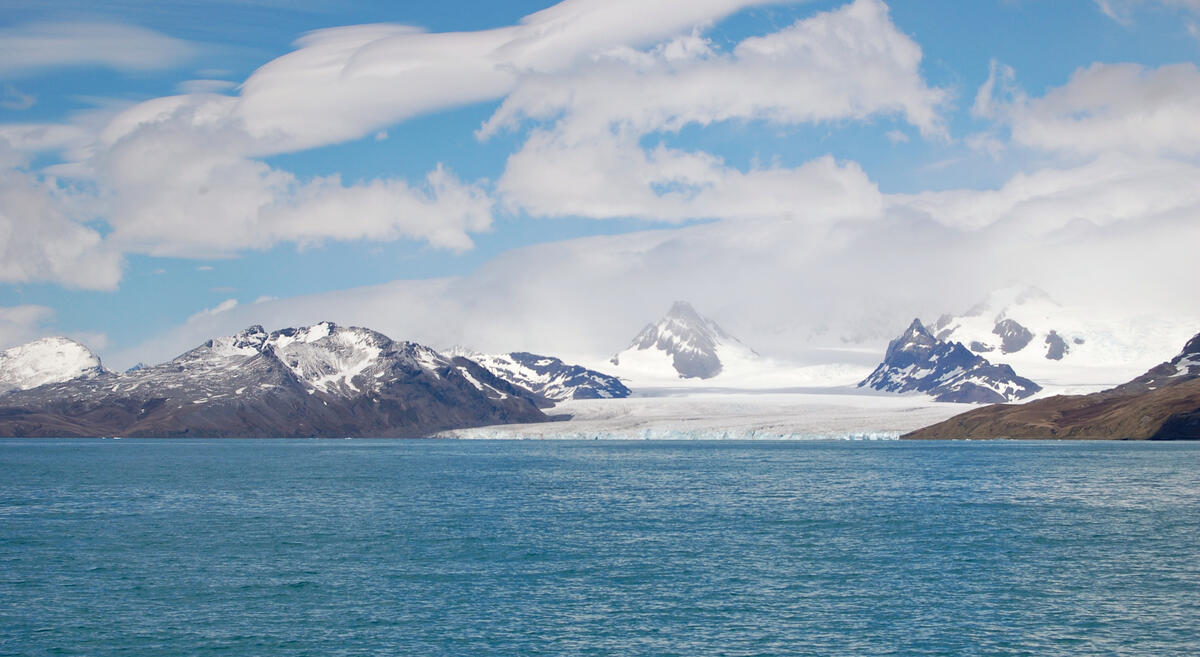
Ocean Harbour was our destination, south-east from King Edward Cove along the coast. This is the entrance – note the rocks, surge, and the kelp in the water. A typical navigation situation in South Georgia.
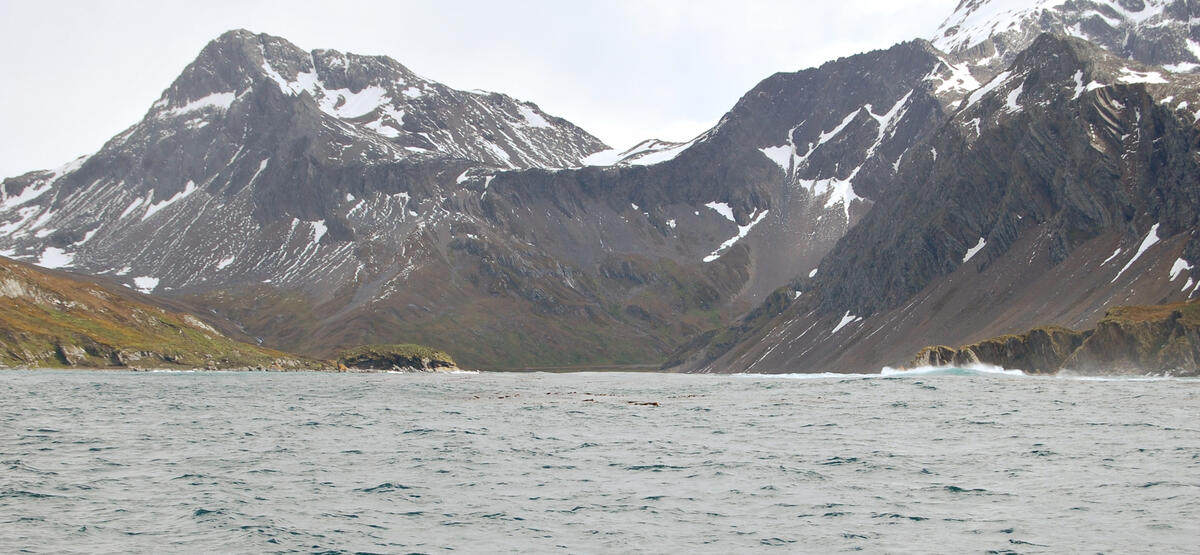
This place used to harbor a small whaling station, the remains of which have now mostly disappeared. The bay affords decent protection but is both blighted by infections of kelp and permissive of the entrance of swell, as the rolling Kiwi Roa will attest to in the below photo.
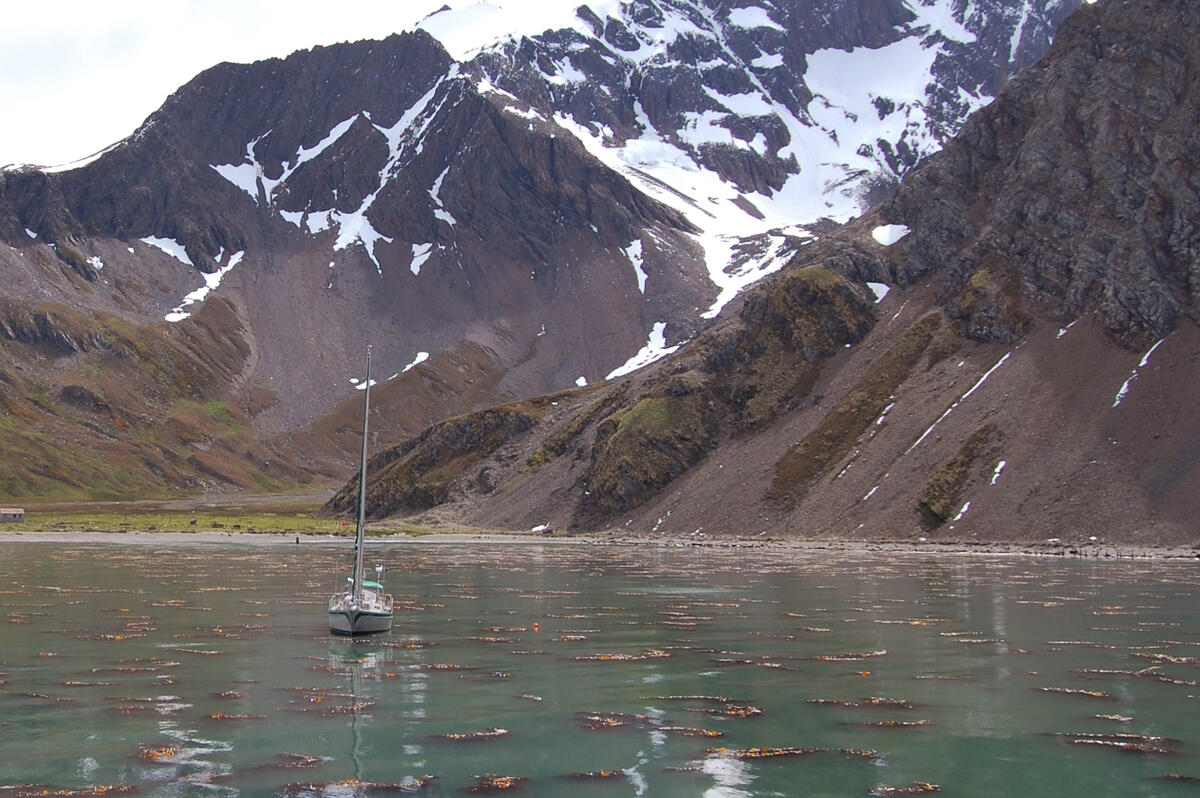
Pieces of evidence of the tempests that sweep South Georgia are scattered about the island. Perhaps one of the most dramatic is found in the wreck of the iron Bayard, a 67 m (220′) three-masted coaling ship originally launched in 1861.
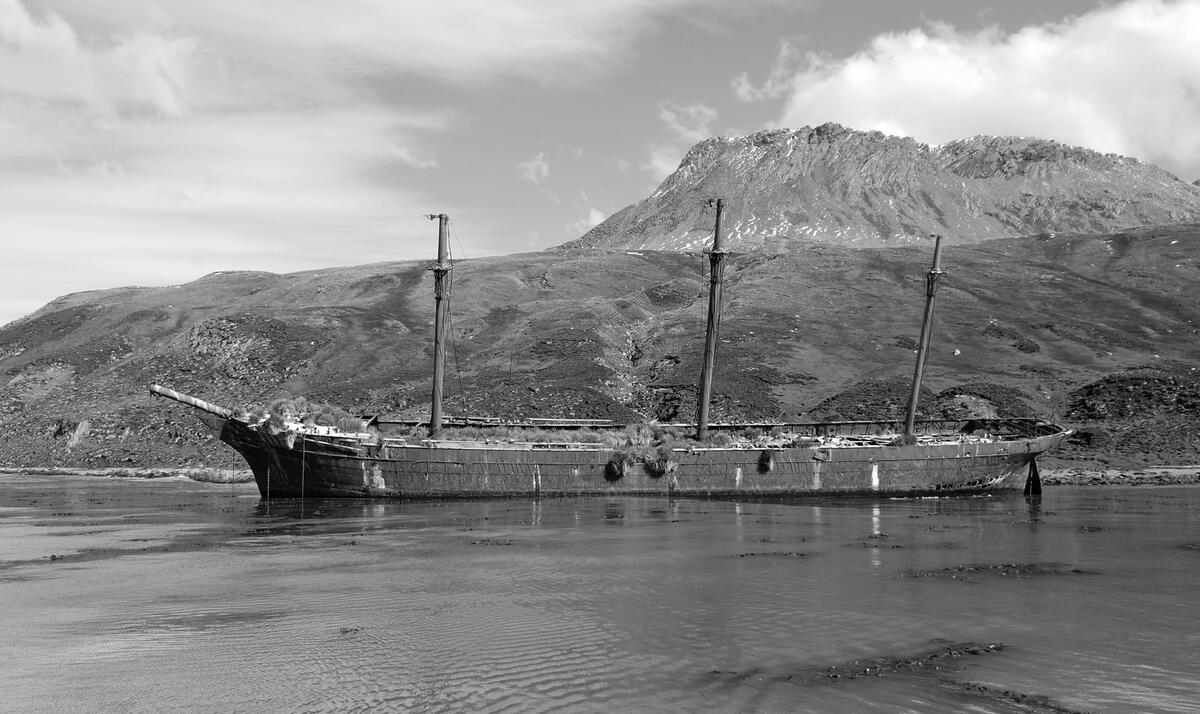
In June 1911 the Bayard was ripped by a winter gale from her dock on the other side of the harbour, and this 1,000 ton ship was driven with unstoppable force to her present residence. The forces involved are not ones with which any sensible-minded sailor will wish to dally.
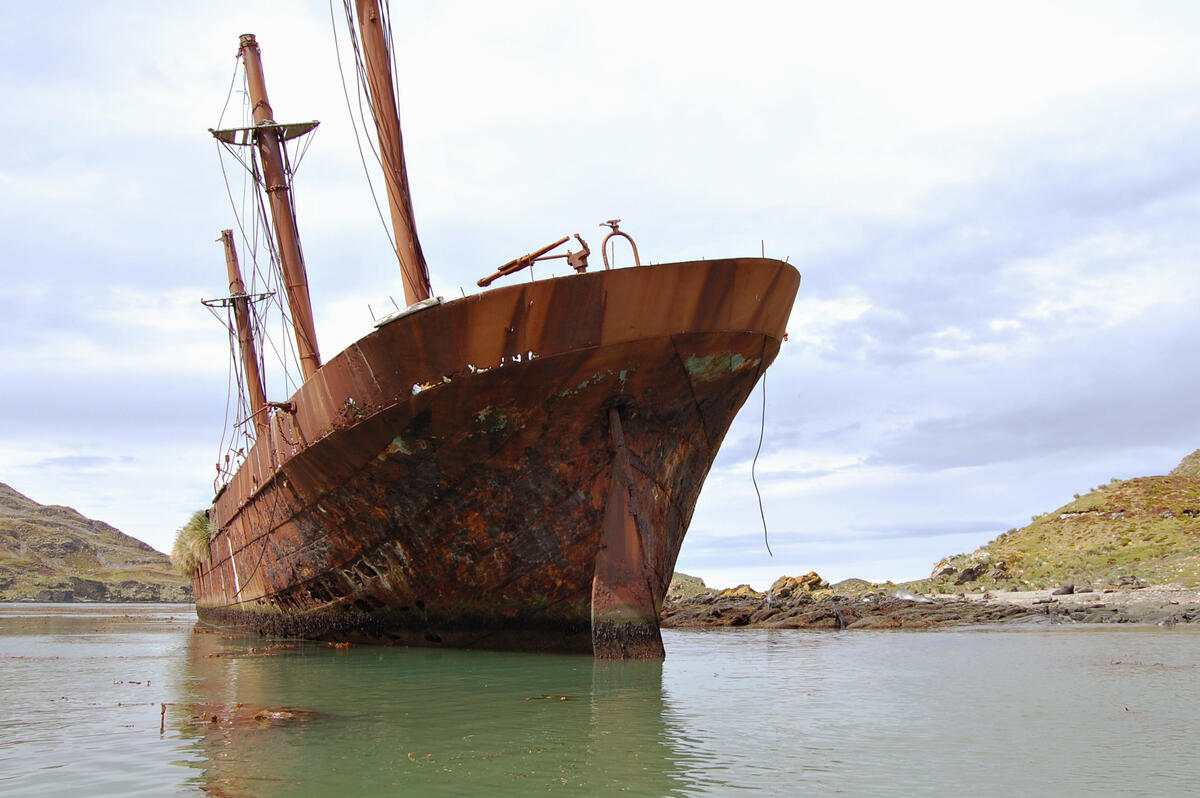
The Bayard wreck has been commissioned to new purpose by local residents. There is a blue eyed shag colony of decent size onboard, nestled amongst the rotting deck timbers.
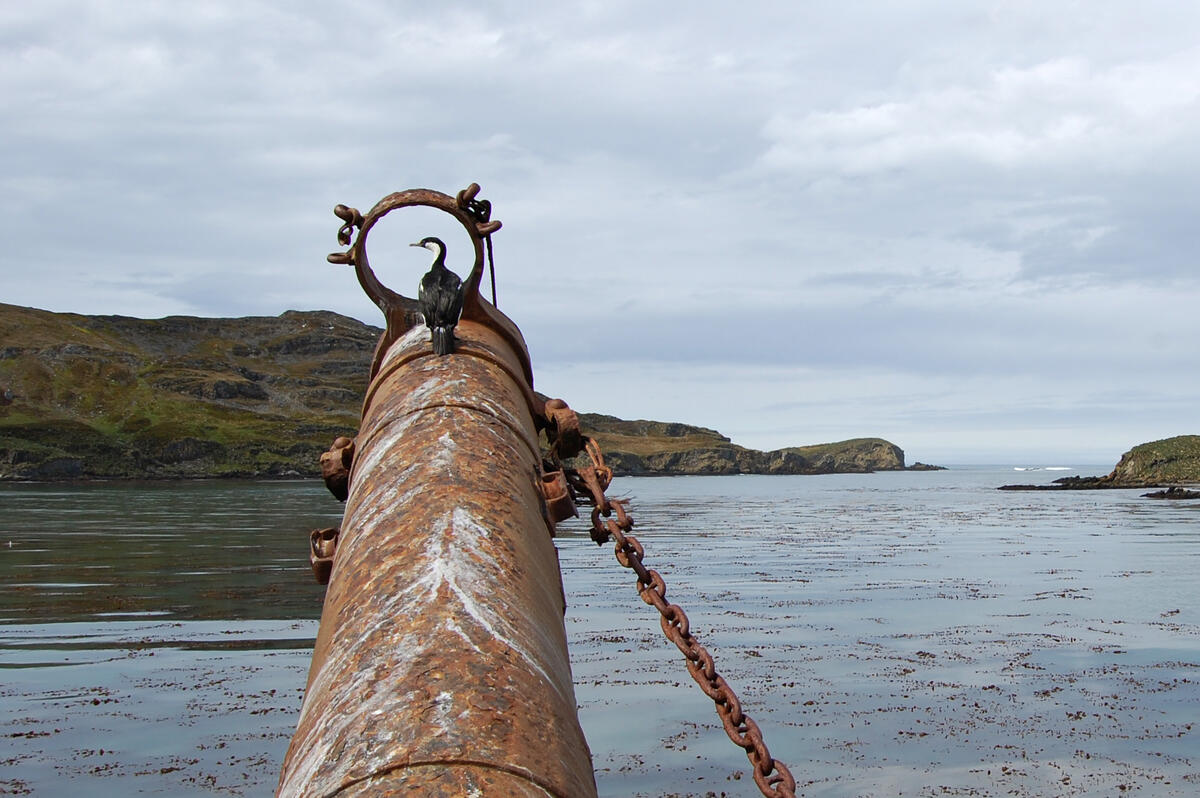
The shags are approachable if the photographer is careful and patient.
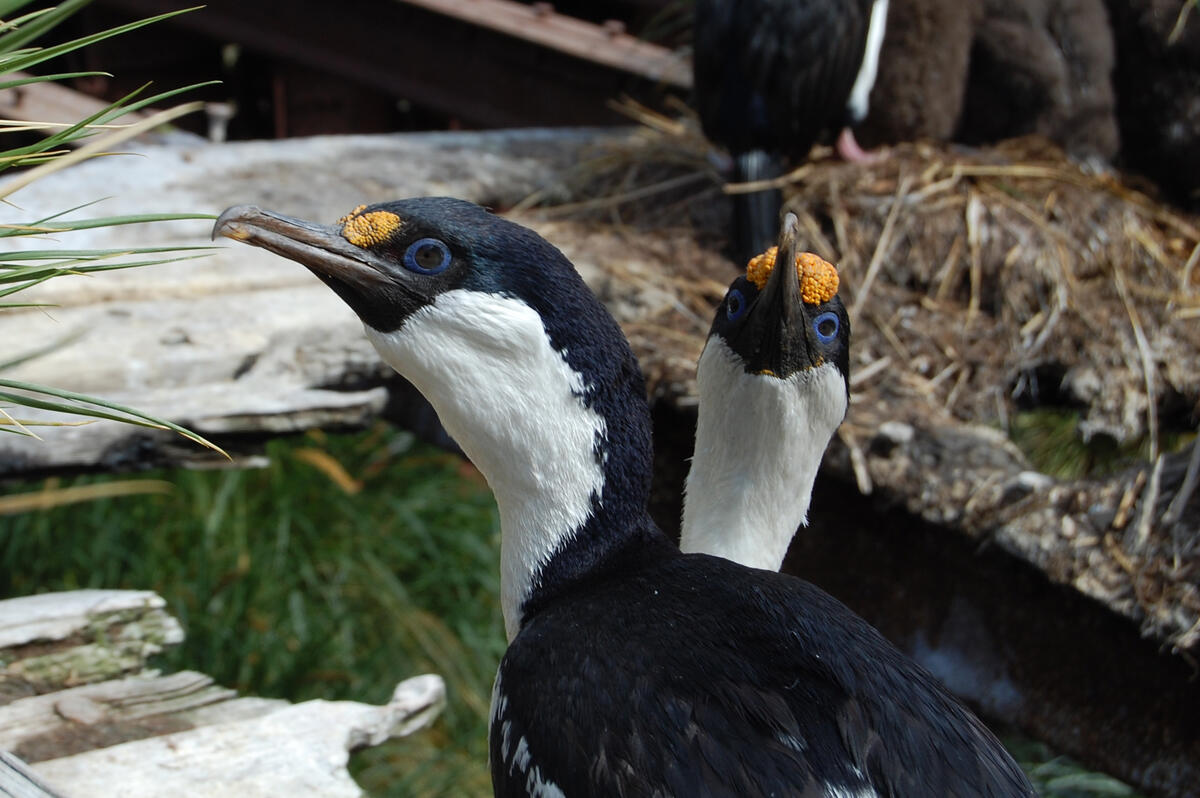
The ship’s decking, partially disappeared, is dangerous and partially obscured by tussock growing where it can. Presumably the birds figure this iron titan from the other side of the world to be no different to any other convenient outcrop on which to situate a colony and raise a few chicks.
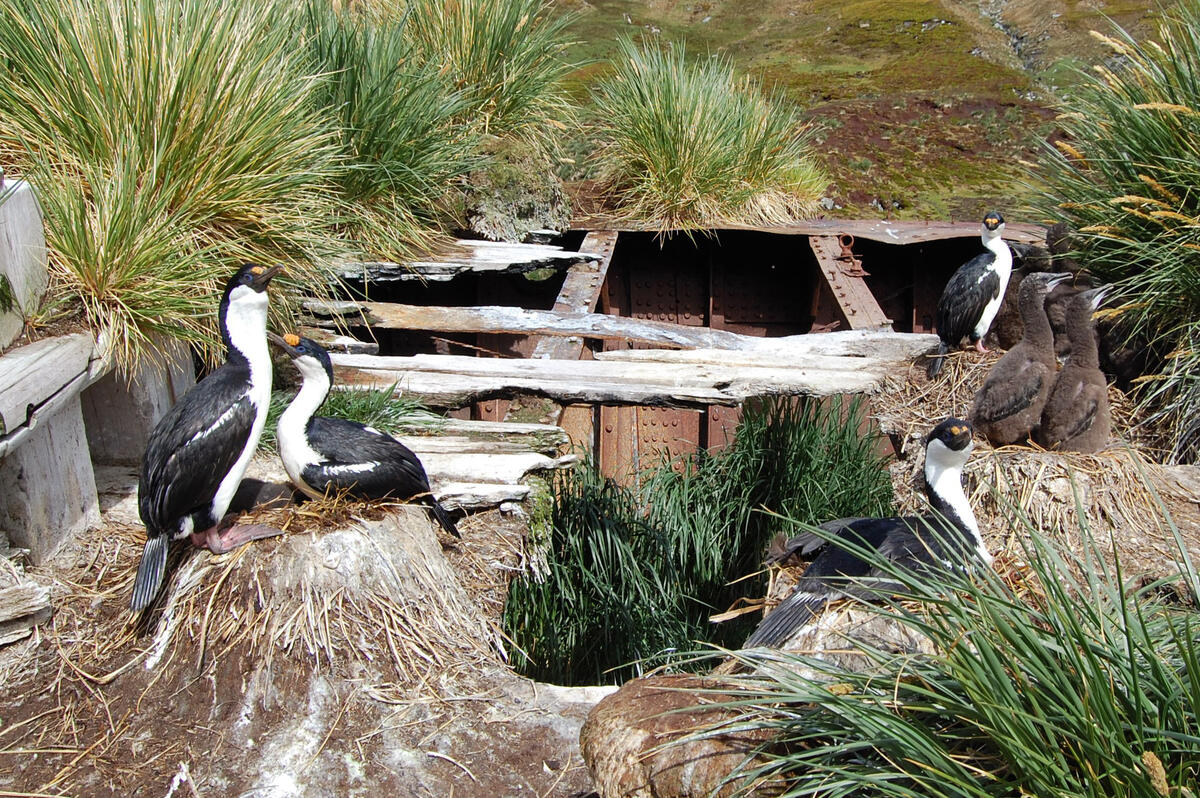
On the beach, fur seals gather. Seals in sufficient numbers become a problem, forming a gauntlet which has to be run to-and-from the shoreline. It is necessary to arm oneself with a “bodger” (stick) to ward off those mammals which become a little over-curious or react too defensively.
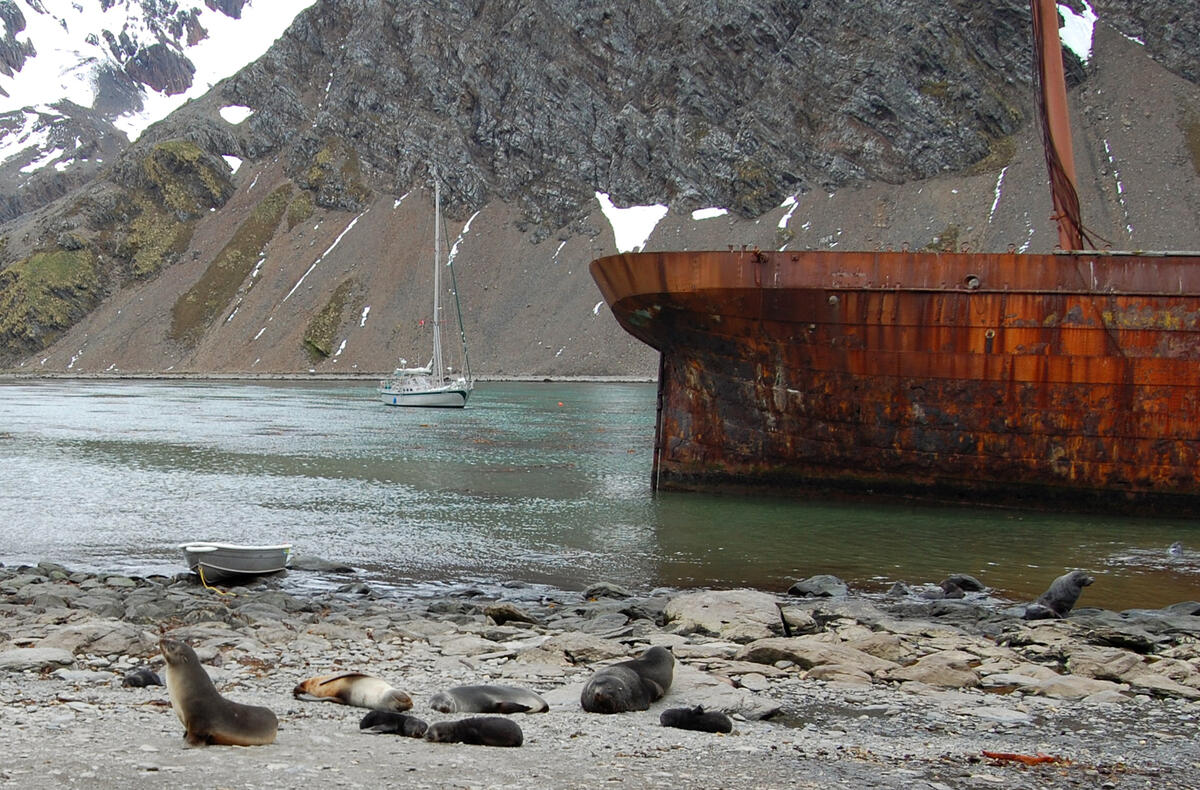
South Georgia is populated by reindeer, an obviously alien species introduced from Norway in 1911 for a local source of meat. They are now viewed as a problem on account of the damage they do to the native greenery and birdlife. Managing their numbers is one of the issues currently on the administration’s agenda – we were happy to help, and fill the freezer while we were at it.
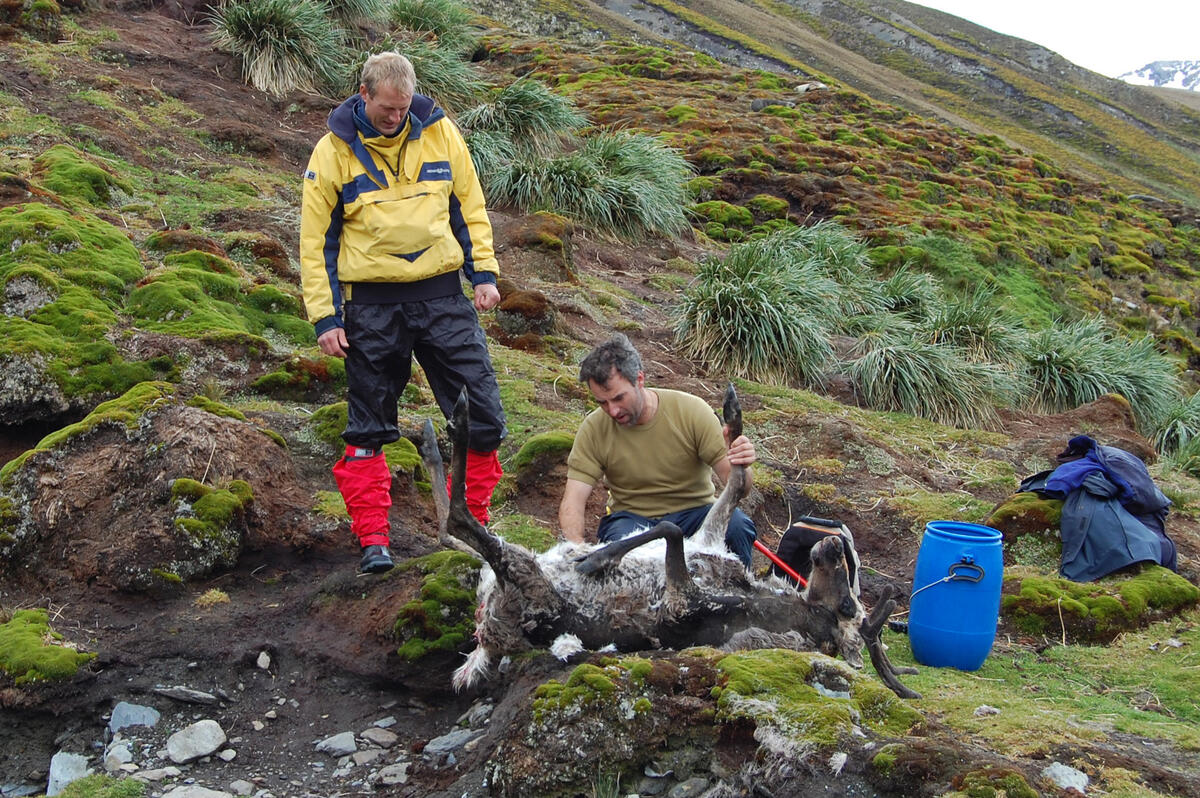
Fur seals on the other hand are now relatively safe from human threat, bodgers notwithstanding.
